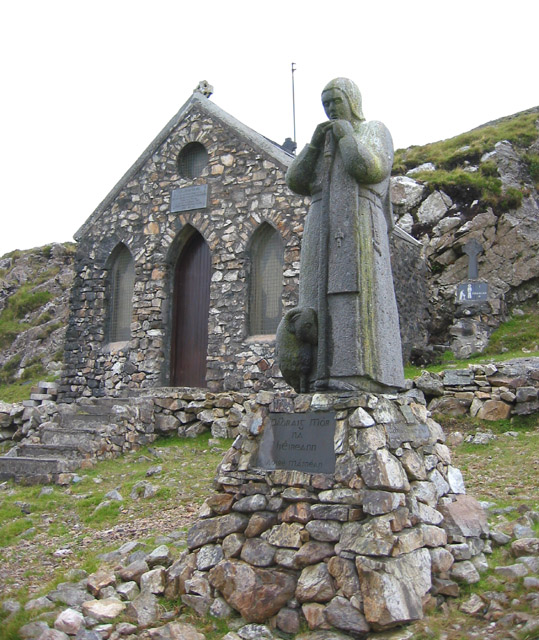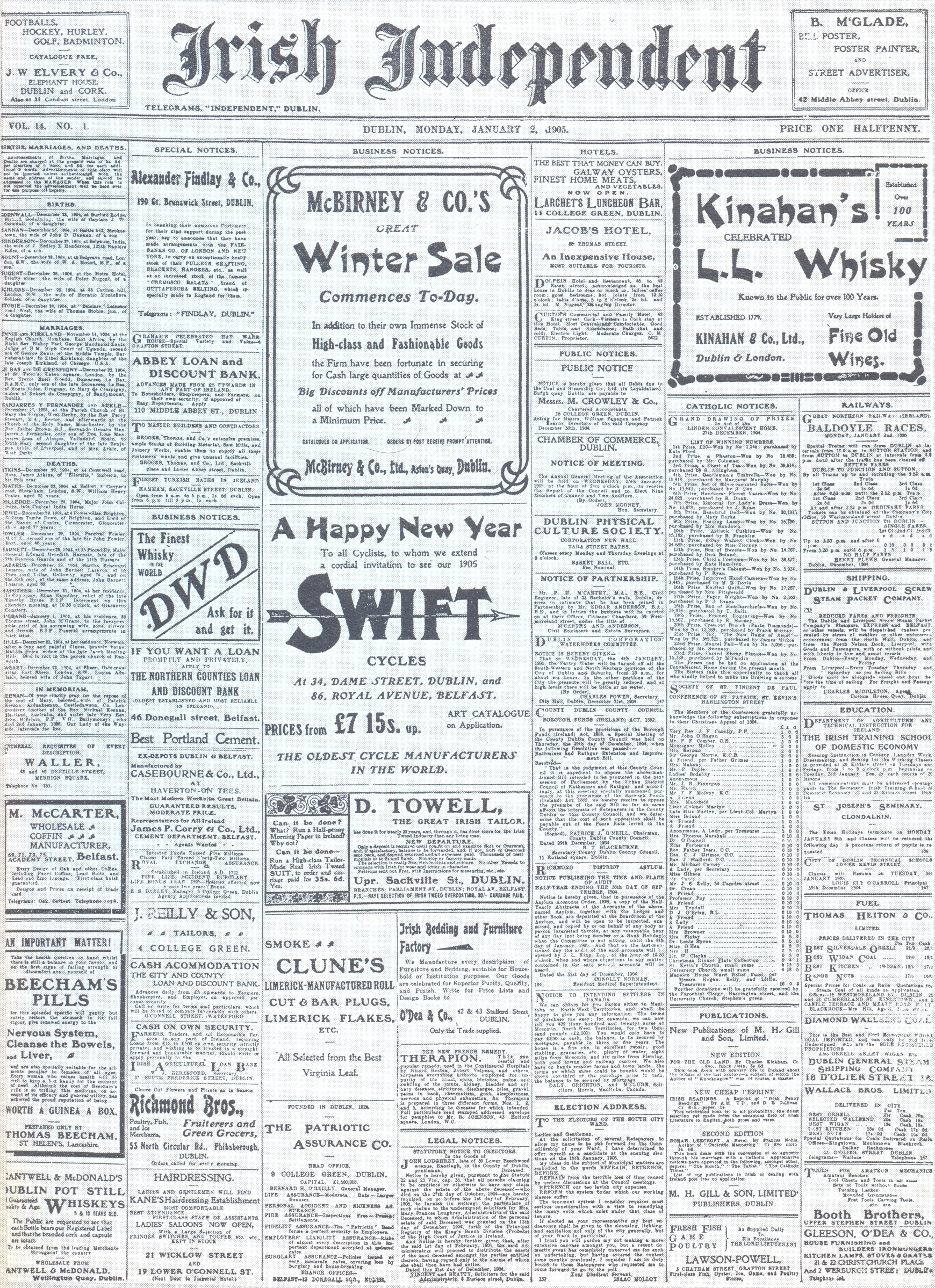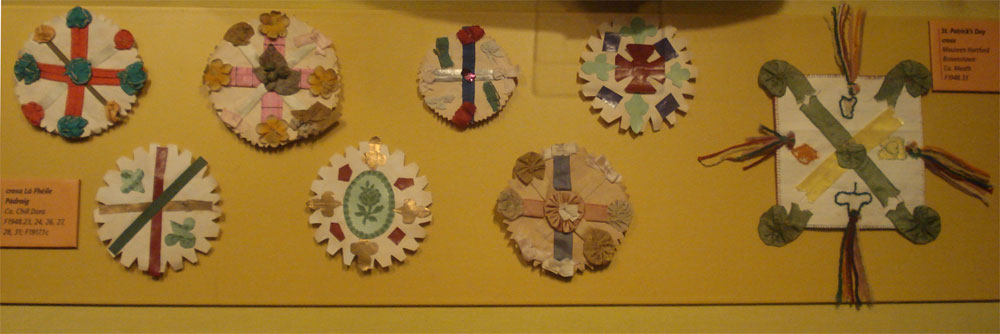|
BinnChaonaigh
Binn Chaonaigh (Irish for "peak of the moss") is one of the Maumturk Mountains of Connemara in County Galway, Ireland. At , it is the fourth-highest of the Maumturks, the 185th-highest peak in Ireland on the Arderin list, and the 223rd-highest on the Vandeleur-Lynam list.Mountainviews, (September 2013), "A Guide to Ireland's Mountain Summits: The Vandeleur-Lynams & the Arderins", Collins Books, Cork, It is in the middle sector of the long north-west to south-east spine of the Maumturks. Geography Binn Chaonaigh lies on a small massif between Binn idir an dá Log to the northwest, the highest peak in the range at , and the large mountain pass of Maumeen or Maumean ( ga, Máméan meaning "pass of the birds"), that cuts deep across the southern sector of the Maumturks range. To the immediate northeast of Binn Chaonaigh, at the end of a long rocky spur, lies the subsidiary peak of Binn Mhairg (meaning "peak of woe") at . Binn Mharig's prominence of qualifies it as a Vandele ... [...More Info...] [...Related Items...] OR: [Wikipedia] [Google] [Baidu] |
Maumturk Mountains
, photo=View south to Knocknahillion from Letterbreckaun.jpg , photo_caption= Maumturk Mountains: looking south from Letterbreckaun towards Knocknahillion and Binn idir an dá Log. , country=Republic of Ireland , region = Connacht , region_type = Provinces of Ireland , parent= , border= , length_km=25 , length_orientation=North West to South East , width_km= , width_orientation= , highest= Binn idir an dá Log , elevation_m=702 , coordinates = , range_coordinates = , translation = pass of the boar , language = Irish language , location = Connemara, County Galway, Ireland , geology= , period=, orogeny = , map= Ireland , map_caption=Location of the Maunturks , type=Pale quartzites, grits, graphitic top , normal_route = "Maamturks Challenge" The Maumturks or Maamturks ( ga, Sléibhte Mhám Toirc; mountains of the boar's pass) is a mountain range in Connemara, County Galway, in the west of Ireland. It is a long, broadly-straight range, consisting of wea ... [...More Info...] [...Related Items...] OR: [Wikipedia] [Google] [Baidu] |
Maumturks
, photo=View south to Knocknahillion from Letterbreckaun.jpg , photo_caption= Maumturk Mountains: looking south from Letterbreckaun towards Knocknahillion and Binn idir an dá Log. , country=Republic of Ireland , region = Connacht , region_type = Provinces of Ireland , parent= , border= , length_km=25 , length_orientation=North West to South East , width_km= , width_orientation= , highest= Binn idir an dá Log , elevation_m=702 , coordinates = , range_coordinates = , translation = pass of the boar , language = Irish language , location = Connemara, County Galway, Ireland , geology= , period=, orogeny = , map= Ireland , map_caption=Location of the Maunturks , type=Pale quartzites, grits, graphitic top , normal_route = "Maamturks Challenge" The Maumturks or Maamturks ( ga, Sléibhte Mhám Toirc; mountains of the boar's pass) is a mountain range in Connemara, County Galway, in the west of Ireland. It is a long, broadly-straight range, consisting of weathe ... [...More Info...] [...Related Items...] OR: [Wikipedia] [Google] [Baidu] |
Binn Mhór
Binn Mhór (Irish for "great peak") is one of the Maumturk Mountains of Connemara in County Galway, Ireland. At , it is the third-highest of the Maumturks, the 140th-highest peak in Ireland on the Arderin list, and 171st-highest on the Vandeleur-Lynam list.Mountainviews, (September 2013), "A Guide to Ireland's Mountain Summits: The Vandeleur-Lynams & the Arderins", Collins Books, Cork, Binn Mhór is on the southern side of the pass of Máméan, on a small massif that includes Mullach Glas () and Corcogemore (); this massif is at the far southeastern sector of the long north-west to south-east spine of the Maumturks. Naming Irish academic Paul Tempan records that Binn Mhór has also been called "Shannakeala". Geography Binn Mhór lies on a small massif in the southeast sector of the Maumturks range, separated from the main range by a deep east-west mountain pass called Máméan. Máméan has been a site of pilgrimage dedicated to Saint Patrick since the 5th century, an ... [...More Info...] [...Related Items...] OR: [Wikipedia] [Google] [Baidu] |
Saint Patrick
Saint Patrick ( la, Patricius; ga, Pádraig ; cy, Padrig) was a fifth-century Romano-British Christian missionary and bishop in Ireland. Known as the "Apostle of Ireland", he is the primary patron saint of Ireland, the other patron saints being Brigit of Kildare and Columba. Patrick was never formally canonised, having lived prior to the current laws of the Catholic Church in these matters. Nevertheless, he is venerated as a Saint in the Catholic Church and in the Eastern Orthodox Church, where he is regarded as equal-to-the-apostles and Enlightener of Ireland. The dates of Patrick's life cannot be fixed with certainty, but there is general agreement that he was active as a missionary in Ireland during the fifth century. A recent biography on Patrick shows a late fourth-century date for the saint is not impossible. Early medieval tradition credits him with being the first bishop of Armagh and Primate of Ireland, and regards him as the founder of Christianity in Ireland, con ... [...More Info...] [...Related Items...] OR: [Wikipedia] [Google] [Baidu] |
Galway Advertiser
The ''Galway Advertiser'' is a free newspaper distributed throughout Galway city and county each Thursday. It was the first of the regional newspapers under the "Advertiser" banner, which now also includes publications based in Athlone and Mayo, as well as advertiser.ie. References External links * Advertiser Advertising is the practice and techniques employed to bring attention to a product or service. Advertising aims to put a product or service in the spotlight in hopes of drawing it attention from consumers. It is typically used to promote a ... Newspapers published in the Republic of Ireland Weekly newspapers published in Ireland {{ireland-newspaper-stub ... [...More Info...] [...Related Items...] OR: [Wikipedia] [Google] [Baidu] |
Crom Dubh
Crom Dubh (, ; meaning "black crooked ne; also ''Crum Dubh'', ''Dark Crom'') is a mythological and folkloric figure of Ireland, based on the god ''Crom Cruach'', mentioned in the 12th-century ''dinnseanchas'' of Magh Slécht. Folklore Conflict with Saint Patrick According to one legend, Cainnech of Aghaboe saw a number of demons flying past and when he inquired of their errand, one of them told him that Crom Dubh had died and they were after collecting his soul. Cainnech bid him on their return to tell him how they had fared. Some time later the demon returned limping badly. He told Cainnech that they were just about to seize Crom Dubh's soul when St Patrick appeared with a host of angels and saints and drove them off, Crom Dubh's good works having outweighed his sins. Another location associated with Crom Dubh is Downpatrick Head in County Mayo. According to Irish legend, St. Patrick came to the headland to confront Crom Dubh, who is variously identified as a pagan chiefta ... [...More Info...] [...Related Items...] OR: [Wikipedia] [Google] [Baidu] |
Máire MacNeill
Máire MacNeill (7 December 1904 – 15 May 1987) was an Ireland, Irish journalist, folklorist and translator. She is best known for her magisterial study of the Irish harvest festival, ''The Festival of Lughnasa'' (1962, 1983). Biography She was born at Portmarnock, County Dublin, the second daughter of historian and political figure Eoin MacNeill and Agnes Moore. After the family moved into the city she attended Muckross Park school. She received her BA in Celtic Studies from University College Dublin in 1925. From 1927 to 1932, she worked as a journalist and then as sub-editor on the Cumann na nGaedheal newspaper, ''The Star''. She also assisted her father with his memoirs.Maureen Murphy: Máire MacNeill. Béaloideas 72, 2004 (Irish Folklore Commission) In 1935, Séamus Ó Duilearga invited her to work for the newly founded Irish Folklore Commission as office manager. She trained in folklore methods at Uppsala University, Sweden, before starting research on the Lughnasad ... [...More Info...] [...Related Items...] OR: [Wikipedia] [Google] [Baidu] |
Irish Independent
The ''Irish Independent'' is an Irish daily newspaper and online publication which is owned by Independent News & Media (INM), a subsidiary of Mediahuis. The newspaper version often includes glossy magazines. Traditionally a broadsheet newspaper, it introduced an additional compact size in 2004. Further, in December 2012 (following billionaire Denis O'Brien's takeover) it was announced that the newspaper would become compact only. History Murphy and family (1905–1973) The ''Irish Independent'' was formed in 1905 as the direct successor to ''The Irish Daily Independent and Daily Nation'', an 1890s' pro-Parnellite newspaper. It was launched by William Martin Murphy, a controversial Irish nationalist businessman, staunch anti-Parnellite and fellow townsman of Parnell's most venomous opponent, Timothy Michael Healy from Bantry. The first issue of the ''Irish Independent'', published 2 January 1905, was marked as "Vol. 14. No. 1". During the 1913 Lockout of workers, in ... [...More Info...] [...Related Items...] OR: [Wikipedia] [Google] [Baidu] |
Cliodhna Cussen
Cliodhna Cussen (1932-2022) was an Irish sculptor, artist and author. She was born in Newcastle West, County Limerick in 1932 to a prominent local family and died on August 2nd 2022. She was married to Pádraig Ó Snodaigh, a poet, writer and publisher. She was mother of Sinn Féin TD for Dublin South Central Aengus Ó Snodaigh. One of her most prominent pieces of public art is at the intersection of Pearse and College Streets in Dublin. The Long Stone replica (Ivar the Boneless' Pillar) was erected in 1986 and marks the site of an original Viking long stone to prevent their longships from running aground. She also created the 'Who Made The World' sculpture in Ballsbridge. She has received many public work commissions which can be found around Ireland. She is known for working mainly in stone and bronze. In 1986, she added a statue of Saint Patrick depicted as a shepherd with a sheep at his feet at the pilgrimage site of Máméan in Connemara. She is the author of the novel, ... [...More Info...] [...Related Items...] OR: [Wikipedia] [Google] [Baidu] |
Stations Of The Cross
The Stations of the Cross or the Way of the Cross, also known as the Way of Sorrows or the Via Crucis, refers to a series of images depicting Jesus Christ on the day of Crucifixion of Jesus, his crucifixion and accompanying prayers. The stations grew out of imitations of the Via Dolorosa in Jerusalem, which is a traditional processional route symbolising the actual path Jesus walked to Mount Calvary. The objective of the stations is to help the Christian faithful to make a spiritual Christian pilgrimage, pilgrimage through contemplation of the Passion (Christianity), Passion of Christ. It has become one of the most popular devotions and the stations can be found in many Western Christianity, Western Christian churches, including those in the Catholic Church, Roman Catholic, Lutheran, Anglican, and Methodist traditions. Commonly, a series of 14 images will be arranged in numbered order along a path, along which worshippers—individually or in a procession—move in order, stoppi ... [...More Info...] [...Related Items...] OR: [Wikipedia] [Google] [Baidu] |
Good Friday
Good Friday is a Christian holiday commemorating the crucifixion of Jesus and his death at Calvary. It is observed during Holy Week as part of the Paschal Triduum. It is also known as Holy Friday, Great Friday, Great and Holy Friday (also Holy and Great Friday), and Black Friday. Members of many Christian denominations, including the Catholic, Eastern Orthodox, Lutheran, Anglican, Methodist, Oriental Orthodox, United Protestant and some Reformed traditions (including certain Continental Reformed, Presbyterian and Congregationalist churches), observe Good Friday with fasting and church services. In many Catholic, Lutheran, Anglican and Methodist churches, the Service of the Great Three Hours' Agony is held from noon until 3 pm, the time duration that the Bible records as darkness covering the land to Jesus' sacrificial death on the cross. Communicants of the Moravian Church have a Good Friday tradition of cleaning gravestones in Moravian cemeteries. The date of Good Fr ... [...More Info...] [...Related Items...] OR: [Wikipedia] [Google] [Baidu] |
Saint Patrick's Day
Saint Patrick's Day, or the Feast of Saint Patrick ( ga, Lá Fhéile Pádraig, lit=the Day of the Festival of Patrick), is a cultural and religious celebration held on 17 March, the traditional death date of Saint Patrick (), the foremost patron saint of Ireland. Saint Patrick's Day was made an official Christian feast day in the early 17th century and is observed by the Catholic Church, the Anglican Communion (especially the Church of Ireland), the Eastern Orthodox Church, and the Lutheran Church. The day commemorates Saint Patrick and the arrival of Christianity in Ireland, and celebrates the heritage and culture of the Irish in general. Celebrations generally involve public parades and festivals, céilithe, and the wearing of green attire or shamrocks. Christians who belong to liturgical denominations also attend church services and historically the Lenten restrictions on eating and drinking alcohol were lifted for the day, which has encouraged and propagated the holida ... [...More Info...] [...Related Items...] OR: [Wikipedia] [Google] [Baidu] |






